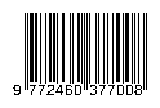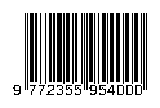Perancangan Perbaikan Proses Produksi Komponen Bodi Mobil Daihatsu dengan Lean Manufacturing di PT. “XYZ”
Abstract
Keywords
Full Text:
PDFReferences
Hines, P., & Taylor, D. (2000). Going Lean. Cardiff, United Kingdom: Cardiff Business
School, Lean Enterprise Research Centre.
King, P. L. (2009). Lean for the Proces Industries : Dealing with Complexity. New
York: CRC Press, Taylor & Francis Group.
Mhetre, R. S., & Dhake, R. J. (2012). Using Failure Mode Effect Analysis in Precision Sheet Metal Parts Manufacturing Company. International Journal of Applied Sciences and Engineering Research, 1(2), 302 - 311.
Miraless, C., Holt, R., Marin-Garcia, J. A., & Canos-Daros, L. (2011). Universal design of Workplace Through The Use of Poka-Yokes: Case Study and Implications. Journal of Industrial Engineering and Management, 4(3), 436-452. Retrieved from www.jiem.org
Modi, D. B., & Thakkar, H. (2014, March). Lean Thinking: Reduction of Waste, Lead Time, Cost through Lean Manufacturing Tools and Technique. International Journal of Emerging Technology and Advanced Engineering, 4(3), 339 - 334. Retrieved from www.ijetae.com
Monden, Y. (1993). Toyota Production System: An Integrated Approach to Just-in-time.
Norcross: Industrial Engineering and Management Press.
Murugaiah, U. (2009). Scrap Loss Reduction using 5-whys Analysis. International
Journal of Quality & Reliable Management, 27(5), 527-540.
Nash, K., Zhang, H., & Strawderman, L. (2011). Empirical Assessment of Decision Making Behavior in Multi-Criteria Scenarios. Industrial Engineering Research Conference. Mississippi.
Ohno, T. (1998). Toyota Production System: Beyond Large Scale Production. Oregon
Rother, M., & Shook, J. (2009). Learning to See-Value-Stream Mapping to Create Value and Eliminate Muda. Cambridge: Lean Enterprise Institute.
Sankar, N. R., & Prabhu, B. S. (2001). Modified Approach for Prioritization of Failures in a System Failure Mode and Effects Analysis. International Journal of Quality and Reliability Management, 18(3), 324-335.
Spencer, K. (2015). Getting the Root Cause. qualitymag.com.
Womack, J. P., & Jones, D. I. (1996). Lean Thinking: Banish Waste and Create Wealth in Your Corporation. New York: Simon & Schuster.
DOI: https://doi.org/10.21107/jsmb.v5i2.6667
Refbacks
- There are currently no refbacks.
Copyright (c) 2018 Satria Khalif Isnain, Putu Dana Karningsih

This work is licensed under a Creative Commons Attribution 4.0 International License.

Jurnal Studi Manajemen dan Bisnis by Universitas Trunojoyo Madura is licensed under a Creative Commons Attribution 4.0 International License.








